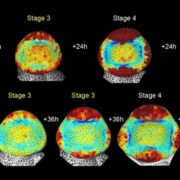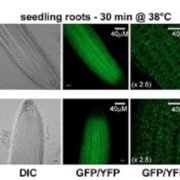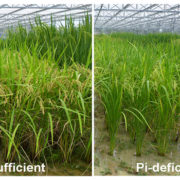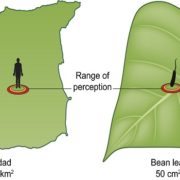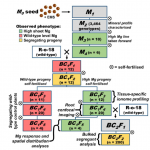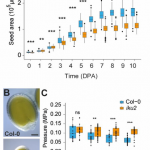Natural variation identifies a Pxy gene controlling vascular organization and formation of nodules and lateral roots in Lotus japonicus (New Phytol.)
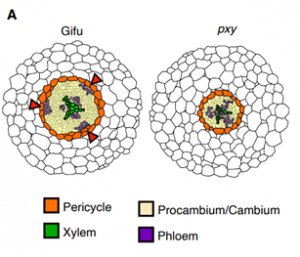 Symbiosis between legumes and nitrogen-fixing bacteria such as Mesorhizobium loti requires an exchange of signals. Plants recognize both specific nod factors (lipochitooligosaccharides) as well as cell-surface exopolysaccharides through distinct pathways. The M. loti exoU mutant fails to properly form exopolysaccharides, and infection fails at the infection thread stage. However, natural variation among accessions of Lotus japonicus has been observed for M. loti exoU mutant response. Hawaharada et al. took advantage of these natural variants and used QTL-seq (Quantitative Trait Locus sequencing) to pinpoint the regulatory gene for the differential response. They identified Pxy (PHLOEM INTERCALATED WITH XYLEM), which has already been characterized as a major player for vascular development in Arabidopsis, and found that the pxy mutants form abnormal nodules. Furthermore, the authors demonstrated that pxy mutants produce fewer xylem cells and lateral roots, demonstrating that the Pxy gene has overlapping roles in lateral root and nodule development, vascular development, and the differential response to exoU. (Summary by Arif Ashraf) New Phytol. 10.1111/nph.17356
Symbiosis between legumes and nitrogen-fixing bacteria such as Mesorhizobium loti requires an exchange of signals. Plants recognize both specific nod factors (lipochitooligosaccharides) as well as cell-surface exopolysaccharides through distinct pathways. The M. loti exoU mutant fails to properly form exopolysaccharides, and infection fails at the infection thread stage. However, natural variation among accessions of Lotus japonicus has been observed for M. loti exoU mutant response. Hawaharada et al. took advantage of these natural variants and used QTL-seq (Quantitative Trait Locus sequencing) to pinpoint the regulatory gene for the differential response. They identified Pxy (PHLOEM INTERCALATED WITH XYLEM), which has already been characterized as a major player for vascular development in Arabidopsis, and found that the pxy mutants form abnormal nodules. Furthermore, the authors demonstrated that pxy mutants produce fewer xylem cells and lateral roots, demonstrating that the Pxy gene has overlapping roles in lateral root and nodule development, vascular development, and the differential response to exoU. (Summary by Arif Ashraf) New Phytol. 10.1111/nph.17356



